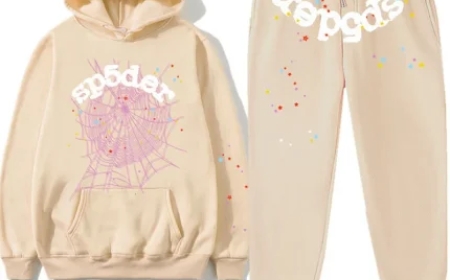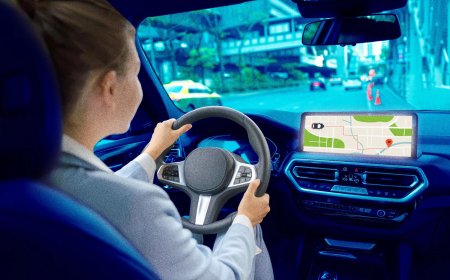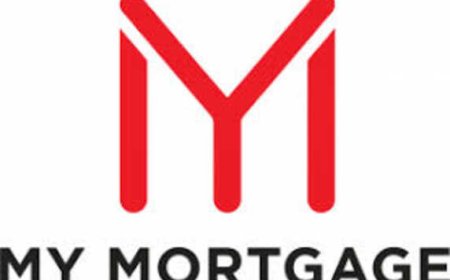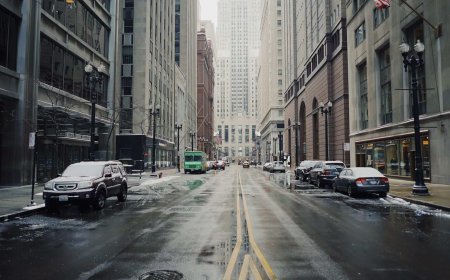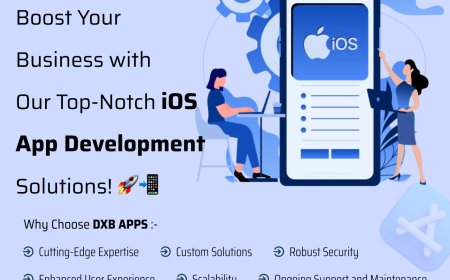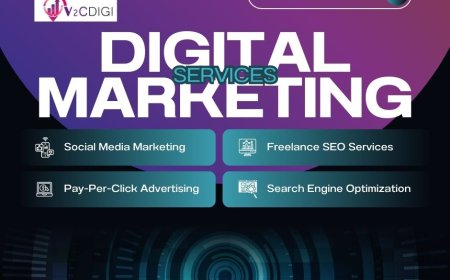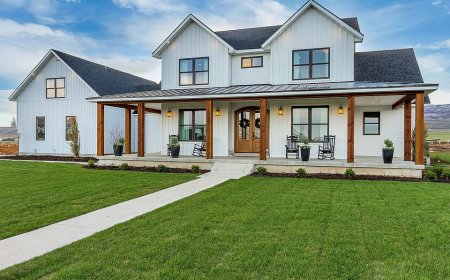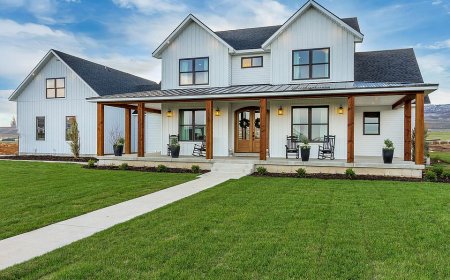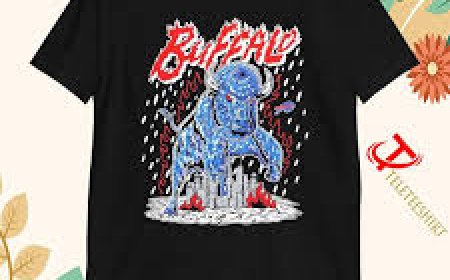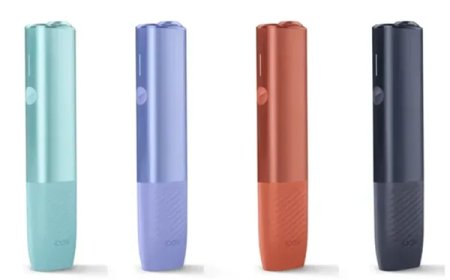Designing for Impact: Trends That Define Modern Web Design Services
Explore top modern web design trends that drive engagement, user experience, and brand identity in today’s digital-first world. Design with impact in mind.

In a digital landscape where attention spans are short and choices are abundant, web design is no longer just about aestheticsits about impact. Businesses today require websites that not only look great but also function flawlessly, drive conversions, and reflect brand values. As a result, modern web design services have evolved, integrating emerging technologies and user-centric strategies that prioritize both form and function.
In this blog, we explore the key trends shaping modern web design, how they're enhancing user engagement, and what businesses can do to stay ahead in a competitive digital market.
1. User Experience (UX) Takes Center Stage
The user experience (UX) has become the cornerstone of modern web design. A visually stunning website means little if it doesnt provide a seamless and intuitive experience. Modern UX design focuses on:
-
Minimal navigation menus that are easy to use
-
Quick load times to reduce bounce rates
-
Mobile responsiveness to ensure consistency across devices
-
Clear CTAs (Calls-to-Action) that guide users through the journey
Designing for UX also includes understanding user behavior through heatmaps, A/B testing, and feedback analysis, helping designers create more effective and engaging websites.
2. Mobile-First and Responsive Design
With more than half of web traffic coming from mobile devices, mobile-first design is no longer optionalits essential. This approach starts with the smallest screen in mind and scales up, ensuring that functionality is not sacrificed for design.
Responsive web design ensures that content adapts to various screen sizes and orientations, creating a unified brand experience regardless of device.
Key elements include:
-
Flexible grids and layouts
-
Scalable images
-
Touch-friendly navigation
3. Microinteractions for Enhanced Engagement
Microinteractions are small animations or design elements that react to user behavior, such as a heart animation when liking a post or a hover effect on a button. These subtle enhancements create an intuitive and dynamic feel.
They:
-
Offer feedback (e.g., form validation)
-
Guide user interactions
-
Make experiences more human
Used wisely, microinteractions can increase time on site and lead to higher engagement rates.
4. AI and Personalization Integration
Todays web design increasingly incorporates artificial intelligence (AI) to personalize user experiences. Dynamic content adapts to users browsing habits, location, and preferences.
Examples include:
-
Personalized product recommendations
-
Chatbots for real-time assistance
-
Dynamic headlines based on user interests
AI-powered web design also aids in predictive analysis, allowing marketers and designers to adjust layouts and offers to better match audience intent.
5. Minimalism and Clean Aesthetics
Modern web design is heavily influenced by minimalism, emphasizing simplicity and clarity. This trend helps reduce clutter and allows users to focus on the most important elements of the site.
Core features include:
-
Generous white space
-
Clear typography
-
Limited color palettes
-
Flat or semi-flat graphics
The goal is to make navigation straightforward and reduce cognitive load, especially on mobile screens.
6. Bold Typography and Creative Fonts
Typography is no longer just a functional design elementits a powerful visual tool. Modern websites leverage bold, unique, and dynamic fonts to make a strong impression.
Key typography trends include:
-
Oversized headlines
-
Custom font integration
-
Animated or interactive text
-
Serif-sans combinations for contrast
Typography now plays a central role in storytelling, branding, and creating visual hierarchies.
7. Dark Mode and Color Customization
Dark mode isnt just a passing trendits become a design standard. Originally developed for reducing eye strain, its now a design preference for many users.
Benefits of dark mode:
-
Improves visual ergonomics
-
Saves battery life on OLED screens
-
Provides a modern, sleek aesthetic
Allowing users to switch between dark and light themes also enhances personalization and accessibility.
8. Accessibility-First Design
Accessibility in web design is no longer a niche concernit's a legal and ethical necessity. An accessible website ensures that all users, including those with disabilities, can interact with content easily.
Best practices include:
-
Alt text for images
-
Keyboard navigation support
-
Screen reader compatibility
-
Proper color contrast ratios
By prioritizing inclusive design, companies widen their reach and demonstrate social responsibility.
9. Scroll-Based Storytelling and Parallax Effects
Scroll-based storytelling and parallax scrolling have transformed how content is delivered. These interactive techniques engage users by turning scrolling into a visual experience.
This includes:
-
Layered animations
-
Section-based storytelling
-
Sticky scroll elements
It allows brands to craft immersive narratives, perfect for product pages, portfolios, or landing pages.
10. Speed and Core Web Vitals Optimization
Performance directly affects user satisfaction and SEO rankings. With Google emphasizing Core Web Vitals in its ranking algorithm, designers now focus on site speed and visual stability more than ever.
Key metrics to optimize:
-
Largest Contentful Paint (LCP)
-
First Input Delay (FID)
-
Cumulative Layout Shift (CLS)
Modern web design services now include technical performance audits to ensure top-tier loading times and interaction quality.
11. Custom Illustrations and 3D Visuals
Stock photos are on the decline. Businesses now prefer custom illustrations and 3D graphics that align with their brand identity and offer unique visual storytelling.
Popular formats:
-
SVG animations
-
3D objects using WebGL or Three.js
-
Illustrated characters representing brands
These visual elements help sites stand out while offering a modern and engaging aesthetic.
12. Voice Search and Conversational Interfaces
As voice assistants become common, web design must accommodate voice search optimization and conversational UI.
Best practices include:
-
Structuring content with natural language
-
Using schema markup for rich snippets
-
Incorporating voice-enabled features
Adding voice capabilities to websites can improve accessibility and keep brands ahead of evolving user behavior.
13. Sustainable and Ethical Web Design
As environmental awareness grows, sustainable design has entered the web development sphere. This includes reducing data transfer, optimizing hosting, and streamlining code to minimize energy use.
Eco-friendly design practices:
-
Lightweight images and assets
-
Efficient coding
-
Green hosting providers
Its not only better for the environment but can also improve site speed and performance.
Conclusion: Designing with Purpose and Precision
Modern web design is about more than visual appealits about functionality, speed, inclusivity, personalization, and long-term engagement. Businesses that want to stay ahead must adopt a user-first mindset, embrace emerging technologies, and align design decisions with brand strategy and audience needs.
By leveraging the latest design trendsfrom UX optimization to AI-driven personalizationdesigners can craft impactful, high-performing websites that elevate user experience and boost brand credibility.







